Went far for gold,
Fed the eagle
Out in the east,
And died in the south
In Saracenland
GRIPSHOLM RUNE STONE (c.1050)
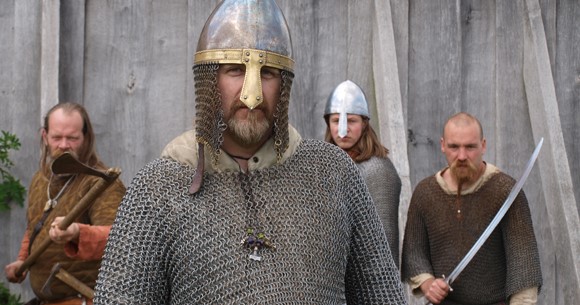
We in London don’t have to journey too boldly at the moment to get a glimpse into the world of the Vikings. VIKINGS –Life and Legend is currently headlining at the British Museum until 22nd June 2014. The last major exhibition on Vikings at the BM was in the 1980s and since then there has been a wealth of exciting new discoveries in Britain as well as Scandinavia so this is a welcome treat. One such recent discovery is stealing the show here. Excavated in the mid 1990s Roskilde 6 is a huge Viking warship measuring 37 metres in length. Only about a fifth of the original hull has survived and nothing remains of the mast, rigging or sail however its remaining timbers have been painstakingly conserved and prepared for display by the National Museum of Denmark. This is the longest Viking ship ever found and is probably the highlight for most people of this show serving as a great image of endeavour and exploration and at the same time symbolising the Viking age. The ship represented a means of transport for these Norse people, for trade and exploration and war as well as being symbols of status and power, belief and magic. However for me it was an exciting prospect having a big Viking ship from the C11th in an enclosed space in London!
But who ARE these Vikings we have come to find out about? We are told that they didn’t have horned helmets and some were intent on trading and farming peacefully rather than looting and killing. When did they first come to Britain, from where and why?
“Vikingâ€, if we can summarise, is a general term possibly from the Old Norse for inlet applied to the Scandinavian peoples from the late eighth century until around AD 1100. They lived in a number of small kingdoms, but as their rulers sought to increase their wealth and power, the smaller kingdoms were absorbed by more powerful neighbours, creating the modern kingdoms of Denmark, Norway and Sweden. The Vikings expanded eastwards into Russia as well as west to Britain and the North Atlantic. Their trade routes linked northern Europe with Byzantium and the Islamic world. York and Dublin became important Viking towns, while in Scandinavia market and manufacturing settlements such as Ribe, Hedeby, Birka and Kaupang became centres of international trade
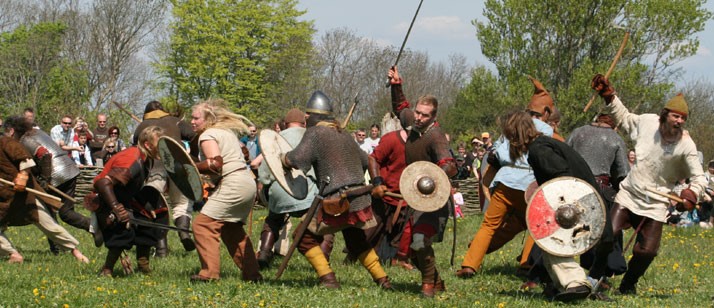
The Viking period in Britain is generally marked as starting in AD 793 by the raid on the monastery of Lindisfarne by men intent on looting, we could call them pirates, from Scandinavia. You can’t help but wonder if some of these Vikings might have had filed teeth like the amazing ones in the exhibition from Kopingsvik, Gotland. And what of their bodies? Viking Rus warriors on the Volga decorated their bodies “ from the tips of his toes to his neck each man is tattooed in dark green with designs ..†This along with the filed teeth, which might also have had coloured infills, would have been absolutely terrifying. In the following centuries their sailing ships built for rapid attack, along the lines of Roskilde 6, helped them to continue this activity attacking undefended coastal and river ports, towns and monasteries of western Europe and beyond in the search for slaves and wealth.
These ships may have sported weather vanes in their masts like the rather wonderful one from Heggen Church, Buskerund, Norway. Made of gilt, copper and brass it would have had ribbons streaming from the punched holes. A small sketch on wood displayed next to it (Bergen C13th) shows a fleet of ships decked with their beribboned vanes. Absolutely wonderful and so immediate and detailed. Yes, from a later period but obviously having parallels in the Viking age, it is something I hadn’t seen before. It really brought alive the idea of Viking ships with dragon heads and wind vanes on their prows, their golden vanes glinting in sunlight and the carvings on the ships picked out in gaudy colours just waiting for a trip up stream for a raid.
As well as the ship, the prominent items in the show are the Vale of York Hoard of C10th silver, silver-gilt and gold and the mass gave from Weymouth where the bodies were decapitated and heads piled separately at the edge of the “graveâ€: a sticky end probably for the crew of a Viking ship on an unsuccessful raid.
The show consisted of many finds which illustrated that raiding was only one aspect of the Viking age. Excavation of their settlements and cemeteries, yielding weights, scales, tools, coins, soapstone vessels, combs, mirrors and jewellery show that many were not only farmers, fishers and hunters but also skilled craftsmen and merchants.
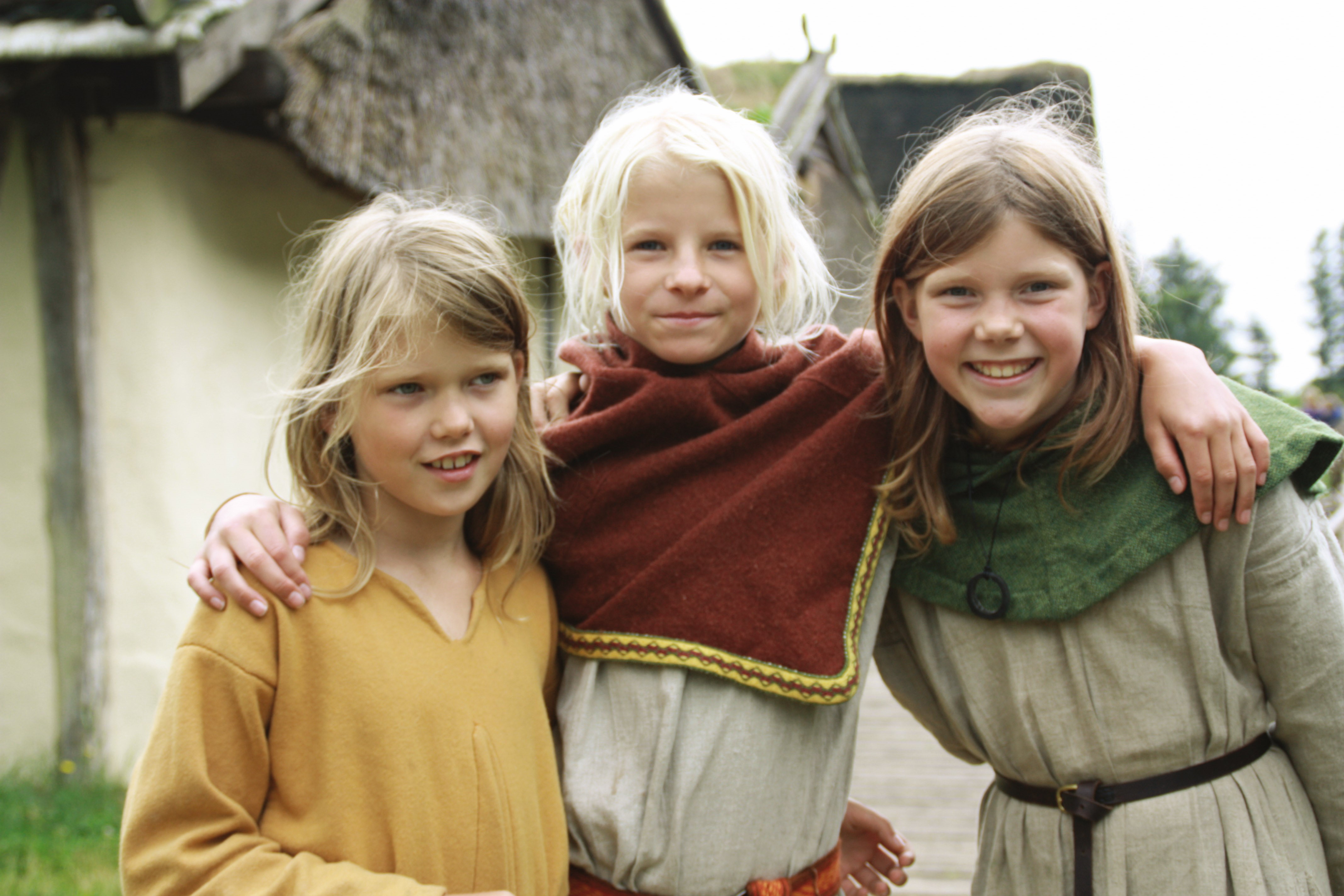
My enthusiasm is somewhat limited for the exhibition as the scale of the ship isn’t quite matched by the size of the exhibition overall. It is disappointingly small. Three rooms I think in total. Although enjoyable and I’ve mentioned a few of my personal highlights, there is a dryness to the exhibition that I find hard to explain. We are presented with grave goods suggesting possible beliefs, status in life and power however the majority of the items on show were small in size and because of its popularity I didn’t feel I got close to the pieces physically or mentally.
The ideas that these people brought with them from their homelands and their effect on existing culture are touched upon. Swords and axes, coins and jewellery, hoards, amulets and religious images serve to illustrate how Vikings created an impressive and far reaching international network, connecting cultures over four continents.
Even this doesn’t quite redeem the exhibition and make me rave about it unconditionally. Perhaps I should turn to listen to the various sagas we hear in snippets as we move around the show, like a voice reaching out to us from a fireside in the past, to put flesh on the Viking bones, rather than to their chattels?
Vikings had, we hear, a hierarchical society with a complex culture. Ruled by kings or chiefs and divided into the free, who had the right to bear arms and speak at local assemblies, and thralls, or slaves, who had no rights.  I’m still not sure even this is enough for me. I think I was hoping for something even more unusual and I know it’s out there. Possibly I am being impractical but larger wooden structures like the carvings on the outside of the Urnes Stave Church in Luster, the like of which we don’t get a chance to see in Great Britain and haven’t been given by this exhibition would have been mind-blowingly fantastic? What’s wrong with me? Shouldn’t a big Viking ship be enough?
The catalogue with the show is excellent and can be bought online if you can’t make the show. Pictures of the Oseberg ship in Oslo, the Jelling rune stone, Denmark and the Þingvellir in Iceland and I realise my issue. Perhaps this feeling of disappointment is because I have been lucky enough to travel to Iceland, Norway, Denmark and Sweden to see the Viking exhibitions on permanent display. They have made such an impression on me and it has left me desperate to visit and travel further afield. I have included some of the places that I’ve been along with some I’ve lined up in my sights for the future in this round up to encourage you to go in search of the Vikings with me!
VIKINGS –life and legend 6th March-22nd June 2014 British Museum, London.
Booking essential
NB..STOP PRESS…World première of Vikings Live from the British Museum at your local cinema (UK only) on 24 April
Featuring British Museum Director Neil MacGregor and presented by historians and broadcasters Michael Wood and Bettany Hughes, the exhibition will be brought to life by Exhibition Curator Gareth Williams, alongside experts on Viking ships and swords, burial and beliefs, and language and legacy.
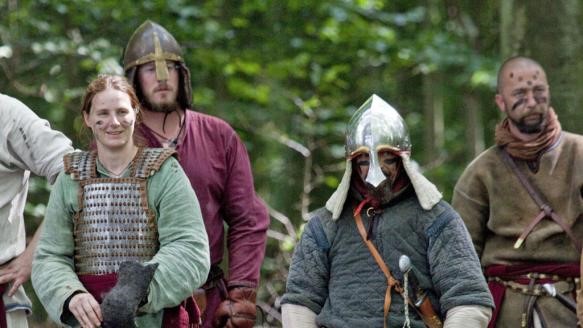
NORWAY
Oslo’s Viking Ship Museum – The main attractions at the museum are the Gokstad Ship, the Tune Ship and the completely whole Oseberg ship. It makes the Roskilde 6 look like matchsticks I’m afraid. These are the best preserved ships known and unmissable. Also on display are artefacts found from the chief grave at Borre. The carved wagon with intricate carvings of “the cat with the hangover†is wonderful and the setting is second to none. I can’t enthuse enough about this place.
DENMARK
National Museum (Nationalmuseet), Copenhagen -Â A great place to start your Viking trail across Denmark. Viking jewellery, coins, weapons and rune stones and the biggest collection of musical instruments specifically lurs that I have ever seen.
The Lofotr Viking Museum in Borg – On VestvÃ¥göy, one of the Lofoten islands. There are replicas of old buildings and you can also row a ship. One of the 15 chiefdoms settled here in 500 AD. Excavations discovered remains of the largest Viking building ever to be found anywhere in Europe which has now been reconstructed on site.
Viking Ship Museum, Roskilde -Â The VIKING SHIP MUSEUMÂ lies on Roskilde Fjord and contains five completely reconstructed Viking longboats, built from salvaged wrecks from the Fjord itself.
Trelleborg Ring fortress, Slagelse –Â the best preserved of Denmark’s Viking fortresses.
Ladbyskibet, Kerteminde – This museum is at the site of a Viking burial mound found to contain a 20-metre-long Viking warship
Ribe’s Viking Museum – Denmark’s oldest town. In the heart of the Viking old town, you can wander through a full-size reconstruction of Ribe’s Viking market place.
Jelling rune stones and burial ground - Viking rune stones known as Denmark’s birth certificate. They tell the story of Denmark’s birth as a nation, as well as King Harald Bluetooth’s introduction of Christianity to the country.
Hobro Museum Collection of prehistoric and Viking archaeological finds –Â Close by, you can see the foundations of a large Viking castle.
Lindholm Høje, Nørresundby – biggest ancient burial ground in Scandinavia. The site dates back to the Iron Age and Viking period and contains 700 graves, marked with striking stone rings and patterns. Museum on site.
Aggersborg, Løgstør – Viking castle fortress
SWEDEN
Birka Museum in Stockholm –Â A fantastic archaeological site. Located on the Bjorko Island in Stockholm, Birka was founded in the late 8th century as a trading port and thrived until it was abandoned in the end of the 9th century. There are many speculations as to why. Birka has been excavated over the last few years and they have discovered numerous graves, metal armour, weapons and remains of a Viking bronze works.
Foteviken Viking museum Рis located at the sea outside Malm̦. Open air museum. You can walk around between the houses in the Viking village.
Museum of National Antiquities, Stockholm – has an interesting permanent Viking exhibition
ICELAND a fantastic country to visit in search of the Vikings
The horses you trek on (and can eat) are the same breed as that introduced by the Vikings when they colonised the country in the ninth century. There are a few museums which would appeal to all ages:
The Settlement Exhibition, Landnámssýningin - A fantastic museum which could easily be missed even though it is in the middle of Reykjavik as the outside is unprepossessing. The museum is based on a 2001 excavation of the area that discovered the oldest archaeological evidence of human settlement of Iceland, dating from 871. The finds include a house, plus a collection of artefacts that give you a glimpse into the everyday life of life in the Viking age.
The National Museum of Iceland, Þjóðminjasafn Ãslands - Iceland´s national museum, is located next the University of Iceland campus in walking distance from the centre of Rekyavik. One of the most important, valuable, and unknown figurines ever found from the Viking period  is a small statue of either Thor or Christ which is the first display you see when entering. Not to be missed.
Vikingworld Reykjanesbær – One for young families along with the SAGA MUSEUM in Reykjavik.The biggest attraction of Vikingworld is the replica Viking ship Gunnar Marel Eggertsson built in 1996 using an authentic ninth century Viking ship as a model. When completed he sailed it to New York in 2000 as a part of the millennial celebration of Leifur EirÃksson’s journey to the New World
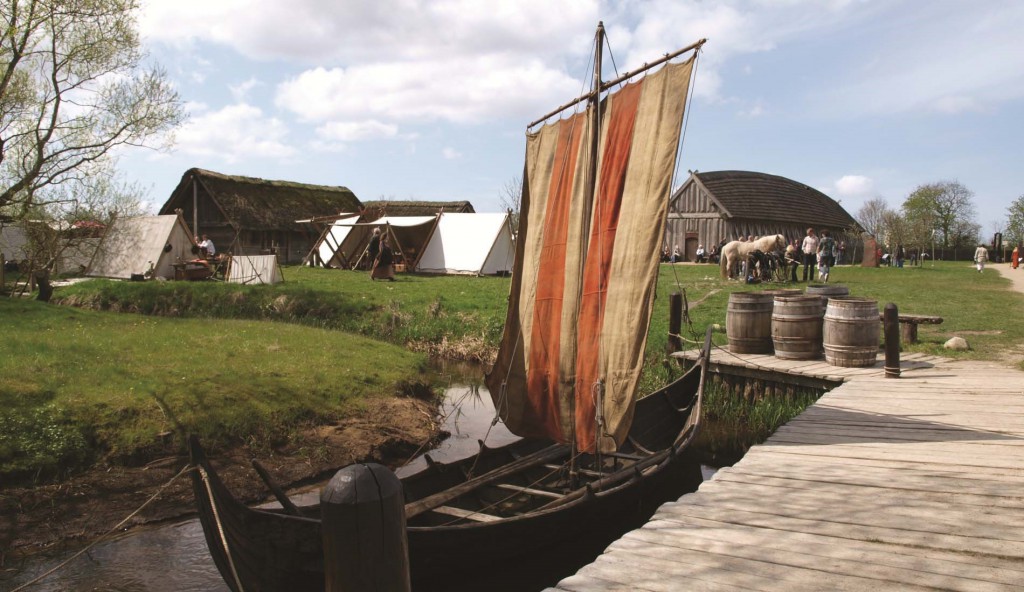
Author: Sue Flett